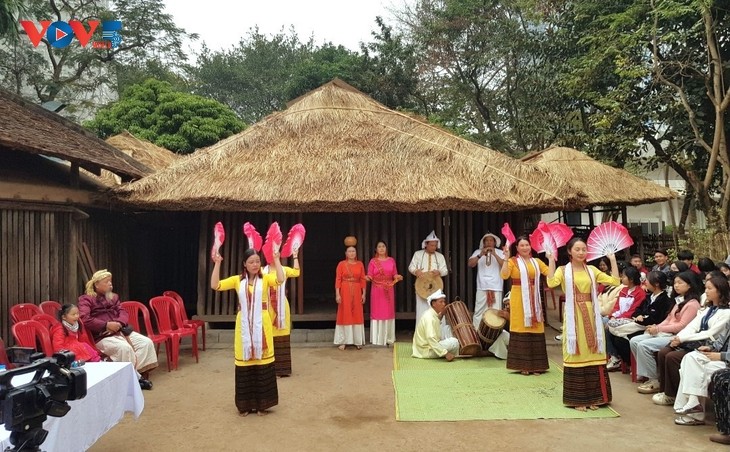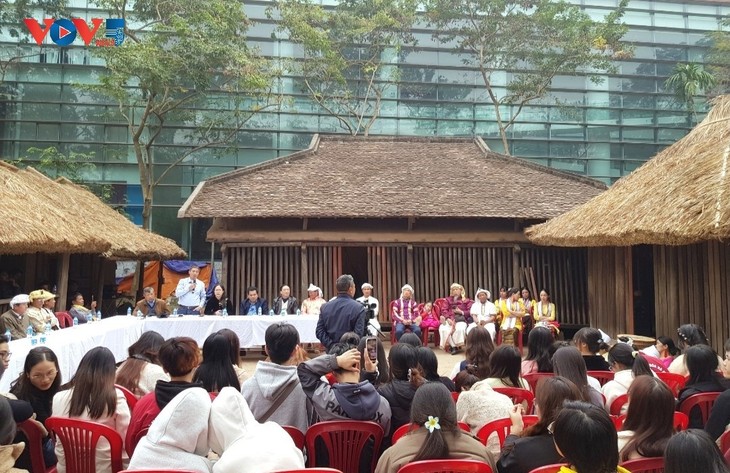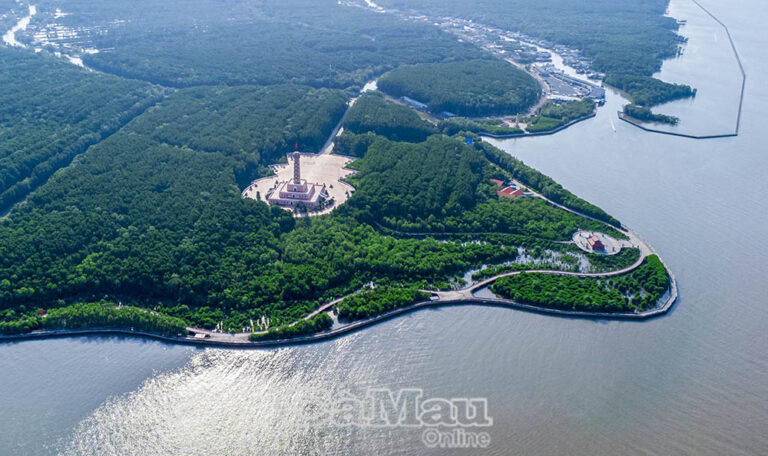Most Cham ethic minority people live in Ninh Thuan province and follow a matriarchal system. After marriage, the husband moves in with his wife's family. Within the extended Cham matriarchal family, each sister has her own chamber on the family compound.

A Cham house built a the Vietnam Ethnology Museum in Ha Noi (Photo: Ngoc Anh/VOV5)
The traditional house of the Cham is usually spacious and has 5 to 7 small houses inside. The samaolhouses are built on the east-west axis to give them good ventilation and natural light.
Dang Chi Quyet, Secretary of the Party cell of Bau Truc quarter talked to us about the general rules for building a Cham house: “The Cham people always find a water source and build a house close to it. The well is always on the northeast side of the house. The kitchen is on the northwest side. Mud and straw are mixed to make the walls.”
The homeowner selects an auspicious day for the ground-breaking ceremony. The number of chambers in the house depends on the family's social status. The house of dignitaries typically contain 7 chambers, while ordinary families have a maximum of 5 chambers. These 5 chambers symbolize the five fingers of a hand or the five elements of the universe. If one element was missing, everything in the world would be unbalanced or would not exist.
One chamber is the kitchen. The biggest chamber in the house is for the parents and unmarried siblings.When the oldest daughter gets married, she and her husband live in the most important chamber, where all family rituals, such as funerals and weddings, are held. When a younger sister gets married, she moves into this chamber and the older sister moves into a newer one.The fifth chamber is reserved for grandparents. Dignitaries have a chamber in which they keep farm tools like hoes and shovels and a chamber in which they keep mills and mortars.

A performance of the Cham culture at the Cham house in the Vietnam Ethnology Museum (photo: Ngoc Anh/VOV5)
Ka Phiu, a Cham man in Ninh Thuan province, said: “When building a house, the Cham start with the kitchen, followed by the chamber where ceremonies are held. Only noble families and mandarins can afford to build a separate structure for storing farm tools and other property. Spiritually, the Cham house represents a person, and when viewed from above, the compound resembles a person lying face down."
Cham people believe that erecting house pillars is the most important step, because pillars connect the people of the earth to heaven. Erecting the house pillars takes place early in the morning, around 6 a.m., a Cham man named Camry told us.
“Only a wealthy and powerful person can afford to build a wooden house. Ordinary people typically use earth and bamboo for construction. Cham houses are designed to be warm in winter and cool in summer,” said Camry.
The Cham people carefully select materials to build a house. The construction technique is passed down from generation to generation. Meritorious artisan Truong Den of Phuoc Dan town said: “It’s difficult to build a traditional house. It’s a job for skilled workers. The carpenters don’t use nails. They use tenons and string ties instead.”
A Cham house is always surrounded by a fence and the fences of two houses are never in line with each. They’re always slightly askew. A Cham man named Ka Phiu said: "The Cham people grow tamarind trees near their home because they are drought-resistant and can withstand harsh weather. Tamarinds are edible. We use tamarind leaves to make a soup that has a cooling effect. A tamarind tree has spiritual significance as well. We believe an infertile couple can pray to the tamarind tree for children. During a cremation ceremony, a tamarind branch must be included, symbolizing that Cham people live and die beside a tamarind tree.”
For a house-warming ceremony, Cham people dress in traditional costumes and perform joyous folk songs and dances.
Ngoc Anh
















